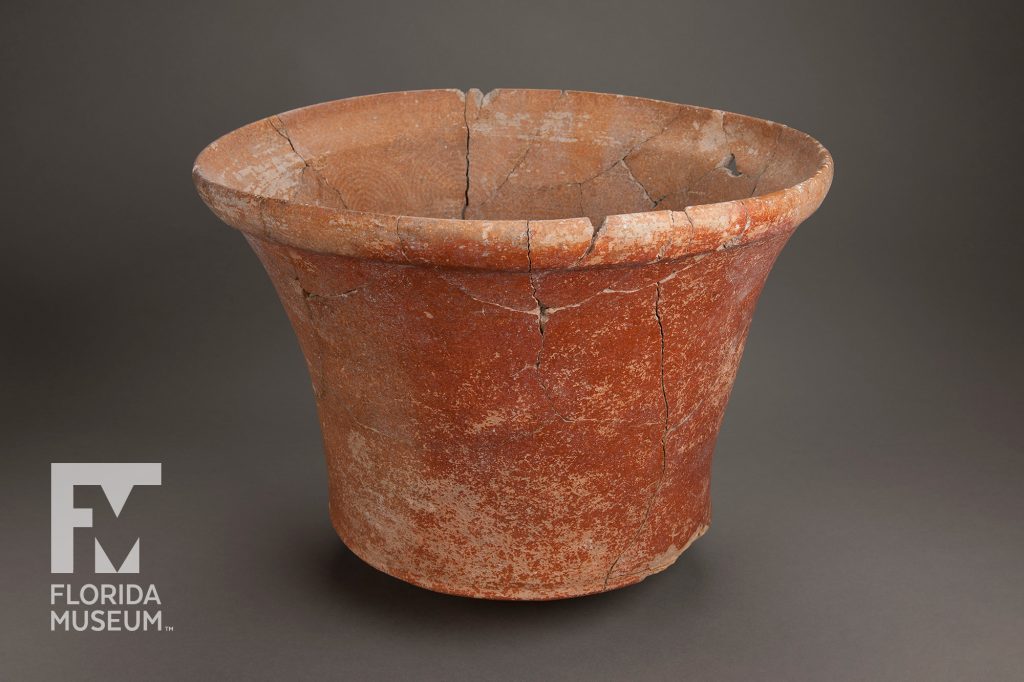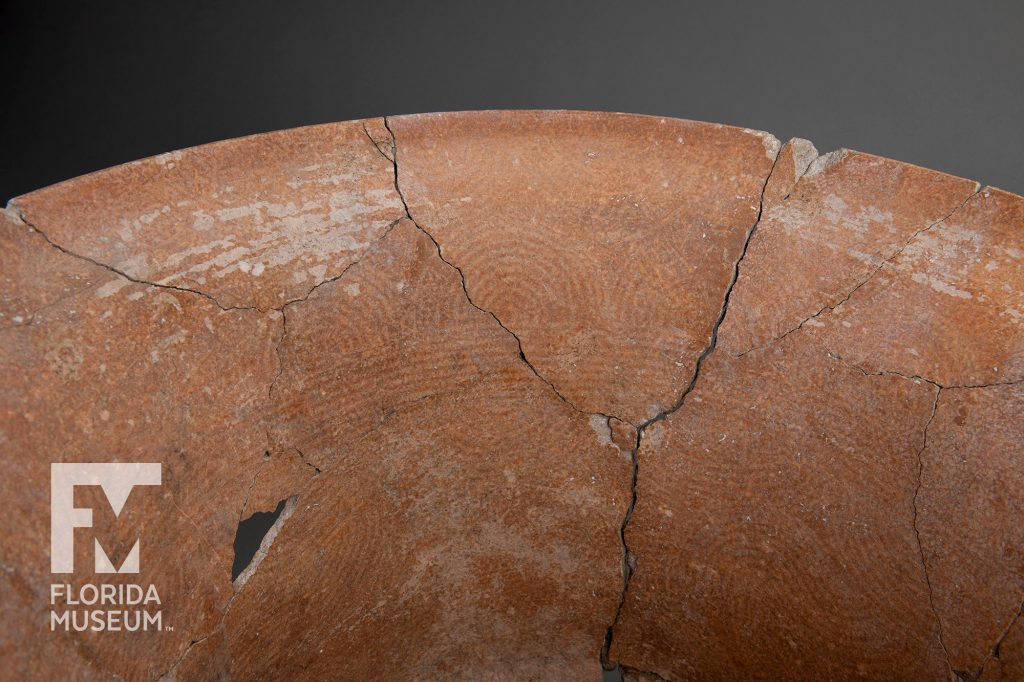Maya people sometimes buried objects to mark sacred spaces or commemorate special social events. This unusually large and well-preserved pottery contained jade heads arranged in a cosmic diagram symbolizing the path of the sun.
Summary
Savannah Bank Usulutan Bucket
Made by Mayan people, Cerros, Belize
Dates to ~50 BC–AD 150
Collection
Story
This bucket is from a famous early Maya site in Belize known as Cerros or Cerro Maya. It was excavated by archaeologists in the 1970s on the summit of one of the tallest pyramids at the site. The bucket measures over 15 inches high, making it rare as one of the largest-known pre-classic ceramic objects from the Maya area.
Not only is it rare, it also contained an undisturbed cache of valuable objects. These included smaller ceramic vessels, pieces of imported hematite, a relatively large number of carved shell objects and a number of green jadeite pieces, probably imported from the Motagua River Valley in Guatemala.
The symbolic references of the cached objects seems to be to the watery world that surrounds Cerros, but there is also an element of celestial symbolism. The cache contained five carved jadeite heads that were arranged in a pattern that refers to the four directions and the center, representing the path of the sun in Maya cosmology. These heads were probably sewn on a royal headband made of perishable materials. The royal headband from Cerros has been interpreted as one of the first signs of the rise of divine kingship in the late pre-classic. At this point in time, the Maya kings began to be worshiped as gods, and they took on attributes of celestial beings, especially the sun itself.
The story of how the cache vessel came to the Florida Museum is also quite interesting. The jade heads in the cache remained in Belize, but most of the archaeological materials from Cerros were sent to Dallas for further research. Many publications resulted from their initial study, but then the collection was moved to storage where it remained for more than 30 years. By chance I found out that the original excavators were seeking a new home for the collection. To our good fortune, they negotiated with Belize’s National Institute of Culture and History to transfer the entire collection from Dallas to our Museum in 2009.
The Cerros Collection is now a focal point for a number of research projects employing new scientific techniques. One result of these studies is that this vessel has been more precisely dated to a key moment in Maya history, just before the pre-classic Maya collapse. Originally dated rather broadly to a period spanning 50 B.C. to 150 A.D., recent studies suggest it was buried sometime between 20 B.C. and 80 A.D., just prior to the collapse.
Finally, this vessel is also significant because it represents the importance of controlled archaeological excavations. The precise dating and the symbolism of the vessel contents can only be understood because they were found undisturbed. To me, this large vessel has come to represent one of the core principles of archaeology, namely that the context of this vessel is the most important aspect of the message it conveys to us some 2,000 years later.
Susan Milbrath
Curator, Latin American Art & Archaeology*
Florida Museum of Natural History
Exhibit
On display Sept. 23, 2017-Jan. 7, 2018, Rare, Beautiful & Fascinating: 100 Years @FloridaMuseum celebrated the Museum’s rich history. Each Museum collection was asked to contribute its most interesting items and share the stories that make them special. Though the physical exhibit is closed, this companion website remains online, providing an opportunity to experience the Florida Museum’s most treasured specimens.
Exhibit Area: Objects Tell Stories
Theme: Ancient Artifacts
 Want to see more? Explore more than 300 breathtaking color photos of plants, animals, fossils and cultural heritage materials from the Florida Museum of Natural History’s collections in the award-winning book All Things Beautiful available from the University Press of Florida.
Want to see more? Explore more than 300 breathtaking color photos of plants, animals, fossils and cultural heritage materials from the Florida Museum of Natural History’s collections in the award-winning book All Things Beautiful available from the University Press of Florida.
*This title was accurate at the time the exhibit was on display in 2017. Please visit the collection website to verify current staff and student information.

